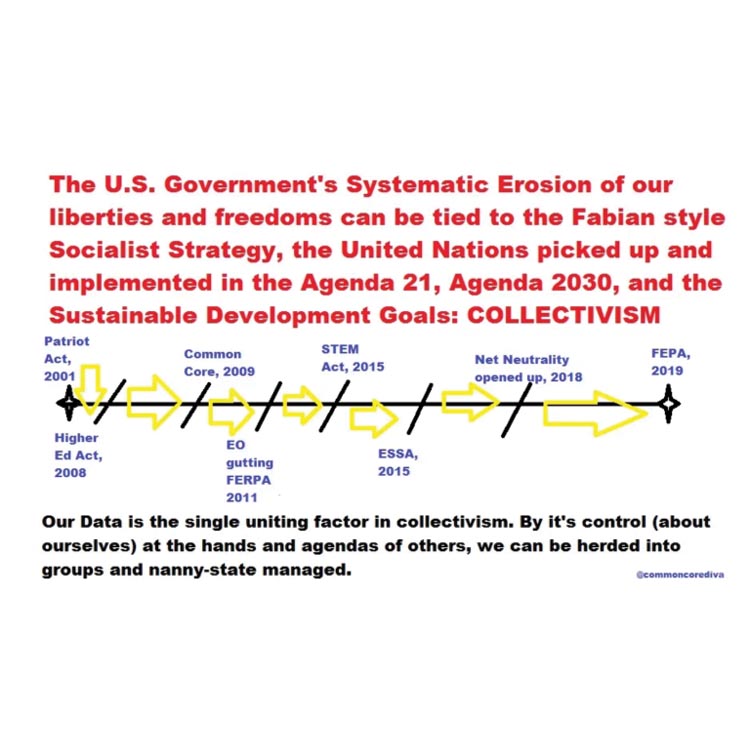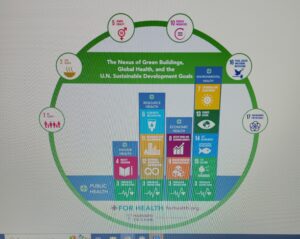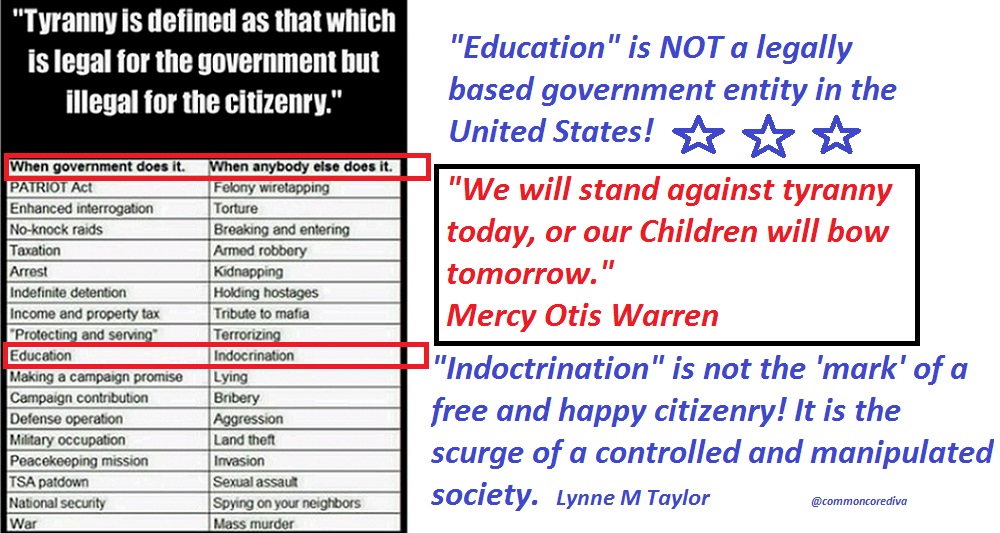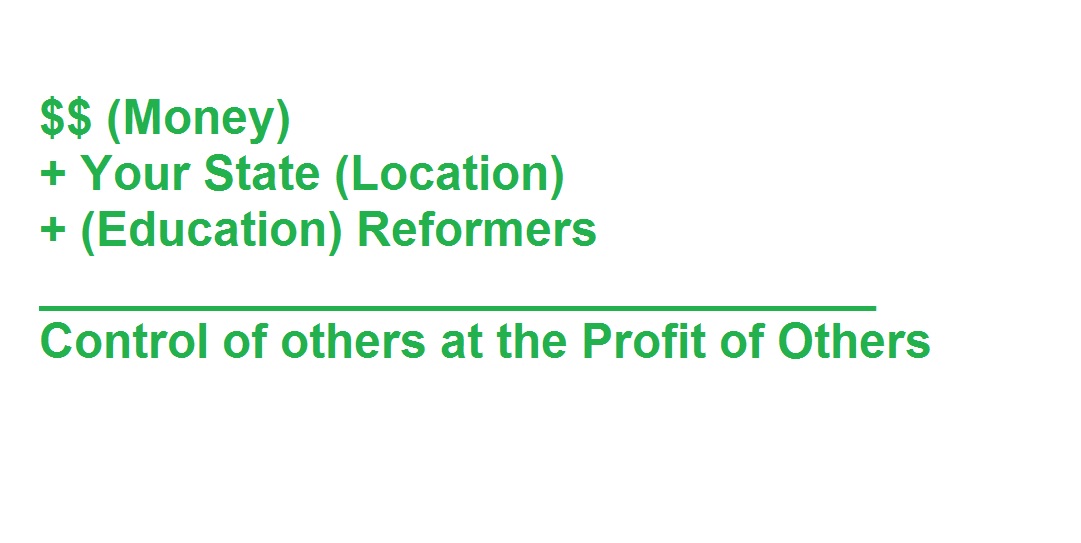Anti Fed Ed Warriors, recently I wrote about the SDGs (Sustainable Development Goals) from a very local viewpoint. This article is an update of sorts for you. Right off the bat, I want to point out that what we see in one place, is being repeated everywhere. The feedback I’ve received about the SDGs Up Close is proof. The second point I want to make is that with what I’m about to share, education is being used as the NUMBER one excuse for what’s happening.
A Local Citizen’s Experience:
As many of you may know, I make it a point to speak up in my local government as much as I can. Currently, the town of Mooresville, NC is conducting a series of town meetings to invite citizens to weigh in on the latest comprehensive planning efforts. Now, if you’ve followed my blog for a while, you know that I’ve reported Mooresville is in the thick of becoming a UN (United Nations) hub. You also know that I’ve shared how the town has been a pilot for the massive amounts of student data harvesting/tracking; inclusive housing (meaning to create housing for workforce), and other items which fit right into the CCSS Machine. However, Mooresville is hardly alone in its efforts to become a cookie cutter hotbed of conformity.
When I attended the first citizen meeting, it was held at a citizen center. The meeting room was laid out in almost a maze like pattern of stations.
Upon walking in the door, there was a place to make a name tag for yourself as well as fill out a short survey which included your address, email, income level and if you owned or rented a home. You were given a one page flyer at this table which laid out the context: hands-on, interactive conversations where I could share my desires for making my town a place to live/work/learn/play.
As soon as you left that table you were guided to the first of 10 stations. At the first station you were given 3 poker chips and a choice of 6 flower pots.
Each pot was described by the leader of the entire city project: a non-resident who was hired by the Town to head up the “Mooresville Tomorrow” project*. The department which hired Mack (not his real name) is the Planning and Community Development Dept. As Mack introduced us to the concept for our time together, he shared that the focus was to help the Town shape its goals and strategies for the future. He also shared that Mooresville HAD to do this. I asked why and was told that no matter what town or city Mack goes to, he helps guide plans to fit zoning and re-zoning efforts. Again, I asked why is this necessary. The answer I received is a big clue for you to look in your town/city or area (in the US and across the world): state laws (federal and regional, too) REQUIRE every local municipality to have zones. IF those zoning laws are not met, funding gets cut and citizens could suffer. So when Mack told me almost comically in response to my questions “It’s the law.” I knew it was trouble. Any hope of weighing in on what I wanted my tax dollars to support and not being pre-selected for me, went out the door.
(*Note: The Mooresville Tomorrow project appears to be an extension of the already approved and in the works “Mooresville One” Plan which is a comprehensive combination of turning a historic town into a modern 15 minute mess. Some of the same images and plots are showing up in both.)
Which leads me back to the 6 flower pots. NONE of the options were what I would even consider worth investing in.
Pot #1: access to the local lake (the description stated that as a group, town residents highly value the lake and its environmental/recreational benefits. Planning ahead means as more rack and stack apartments are built near the lake, public access is a must. I must point out that this lake is the chief water source for the entire area, especially inside the town limits. (This pot’s purpose totally glosses over the fact that the lake being built around has been suspected and investigated for a tremendously high rate of all types of cancer in the area, as well as, many citizens do not use the lake or care to access it because the have their own environment and recreational needs met at their choosing.)
Pot #2: fostering development of walkable multi-use centers. (described as way to meet the changing needs of workers and households so that a balance between urban and traditional spaces can mesh. The example given was to re-create Charlotte NC’s City Center in Mooresville. The future holds that new development will be built this way while older neighborhoods are redeveloped.)
Pot #3: focusing on regional and internal mobility connections (in other words, how can traffic become less about your car and how you travel using more public or becoming more pedestrian)
Pot #4: providing opportunities for developing new housing choices (first off, housing is a defined market including mobile homes, single family homes, apartments and condominiums. So this begs the question, what other type of housing is there? The description for this pot stated that after several attempts to have affordable housing for the workforce, this is a must to cut down on the 70 percent who commute to work. I can attest that of the new rack/stack apartments, rent starts out at well over $1,000 a month; well above what many limited income residents can afford. This counts those gainfully employed as well as those who are being forced out of their single family homes and into rental properties.) So, is this really about housing ‘choices’ or reducing your travel?
Pot #5: leveraging utility and transportation investments to support economic and housing development (described as the city government has been ‘fortunate to have more than $1.1 billion in public transportation funds.) Between local bonds (bonds are deferred taxation schemes), state and federal funds’. So the future means we must address in new infrastructure. Note: any city, town, state or federal entity which puts economics first, over people is fascist. Go back and read the pot’s point: ‘economic and housing’, not housing and economic. Also note that if you meet anyone who drives in this part of NC, the road planning which exists has been in need of addressing WELL before anything in the future!
Pot #6: expanding quality of life through green spaces (the description revealed that town residents have identified parks and trails as important. More greenways, civic spaces are important. Again, Charlotte is the example.)
Note: The problems with using Charlotte as an example are a) major population difference, b) major city vs town, c) Charlotte is among the Climate Mayors (Extra Note: over 500 US cities (Mooresville is also listed as a member) are represented and since the group’s beginning, regardless of local elections, the cities remain on the list, so any previous mayor to those in the future, if your town/city are on the list: watch out. ) IF you live outside the US, the Global Covenant of Mayors, which represent close to 13, 000 cities (at least 185 of these are American), is also worth looking into.
The Other Stations:
Anti Fed Ed Warriors, you’re probably wondering when the education part of all this will show up, since that’s my blog’s purpose. Trust me, we will get there and it will be something you may not expect, as far as the SDGs.
However, let me tell you a bit more about the stations.
For 2 of the remaining 9, we were given red and green dot stickers and coached into using them to show our preference for the types of neighborhoods we would prefer. There were duplexes (we currently have plenty), row houses (aka: tiny homes), mixed used neighborhoods (being overrun with these), rack and stack apartments (are seeing massive amounts of trees and land destroyed for these), and single family homes with postage stamp size yards (1/4 acre or smaller, no garage and no front yard). There was also an option to choose a single family home with a ‘large yard’ (meaning a garage, front and back yard not to exceed 1/2 acre. (*Note: so, for all the town’s original city plots which are well over 1/2 acre; what is to become of them? What about the homes which occupy these large lots?) In all the options we were given to choose from, anywhere from one to three stories for mixed use and homes. Apartments would be even taller. Existing building codes prohibit really tall buildings, yet we’re already seeing projects being considered of 6 or more stories!
Some of the other stations had you choose between where you’d spend your money locally, under this new footprint; have you pick out what type of greenspace is best; what changes you’d make to the town based on all the travels and places you’ve lived, as well as share your personal thoughts as to why all this change is or isn’t a good thing. The biggest elephant in the room, however, was the station you see below.
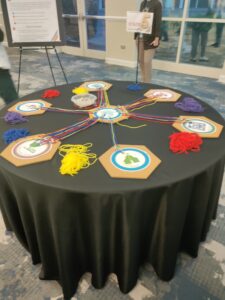 Warriors, you home is in the center of the table. Your school, work, shopping, restaurants, greenways and healthcare are the six locations you can travel to. The color blue represents all the places you can walk to. Red is for biking there. Purple is public transportation and yellow is your car. In the description of this station, two points were made: a) consider only traveling for a purpose and b) are you free to choose how you get about or are you dependent?
Warriors, you home is in the center of the table. Your school, work, shopping, restaurants, greenways and healthcare are the six locations you can travel to. The color blue represents all the places you can walk to. Red is for biking there. Purple is public transportation and yellow is your car. In the description of this station, two points were made: a) consider only traveling for a purpose and b) are you free to choose how you get about or are you dependent?
Where the SDGs Come Out to “Play”:
After I got home, I knew I had to find out what company the town had hired to orchestrate this symphony of agenda. Turns out it’s the APA (American Planning Association). Mack is one of their certified AICPs (American Institute of Certified Planners). These AICPs are progressive in their tactics. They also go to towns and cities all around the country. APA’s tagline is “Creating Great Communities for All”. Their 2024 top priority is ‘zone reform’* to address the ‘housing crisis’.
Meanwhile the AICPs are actively seeking to align themselves to the cities, counties and regions using ‘sustainable development’. When you consider that the APA is in fully support (and creating) ‘green communities’, the writing’s on the wall.
(*Note: among the reforms being considered in zoning is the use of AI, artificial intelligence. On the Kuby Team blog you can read about the dangers this brings every family. Where you live is controlled by a computer, not your personal choice.)
Here’s the ‘smoking gun’ about the American Planning Association: they are a key contributor to the UN Economic and Social Council’s High Level Political Forum on Sustainable Development! (*Note: if you are reading this outside the US, you not only have seen meetings like I described, but you can now see where your zoning and governments are intersecting the SDGs under your nose.)
When you access the ‘key contributor’ link, scroll down and you’ll see that the SDG #4 (education is the FIRST listed in regards to the APA’s support and devotion to the UN’s Sustainable Development Goals. Be sure to note the others ones connected to education). APA also has articles you can read on their blog about zoning, 15 minute cities, 20 minute suburbs and more.
Bonus Resources for Your Research/Activism in Fighting the SDGs:
1) Here’s a link to the ICC, International Code Council (where it’s revealed that education is impacted not only by the buildings, but what’s taught inside those buildings when it concerns teaching future planners). While the ICC’s ‘international’ aspect doesn’t cover every single country outside the US, it also uses these same codes for every state of the US. ICC also holds the IZC (International Zoning Codes). This is only available in a purchased book form, however, I did find a link which describes the IZC as arranging compatible buildings and land uses; establishing provisions for use in the interest of social and economic welfare of the community. The ICC/IZC promote UNIFORMITY IN WHERE YOU LIVE and HOW YOU LIVE.
2) The UN’s SEZs (Special Economic Zones) from the World Investment Forum’s website (you’ll see lots of regionalism in adherence to the SDGs)
3) From the SDC (Sustainable Development Code): ‘Green Zones’ which are used by local governments to adhere to the SDGs.
4) “Upzoning” (the ability for local government to change existing codes for taller buildings/more buildings than historically allowed) in order to adhere your town to the SDGs.
5) From World Green Building Council, the image you see below is to promote ‘green buildings’ for health. However, notice what other SDGs are involved. Be sure to read how the WGBC believes it is buildings which help shape our health.
